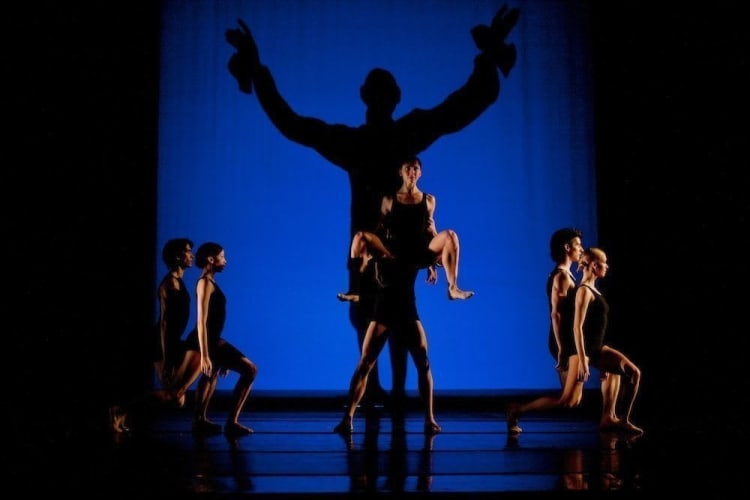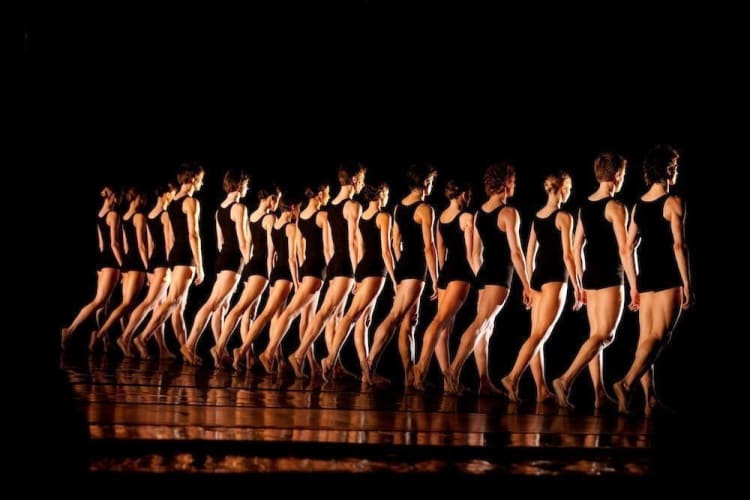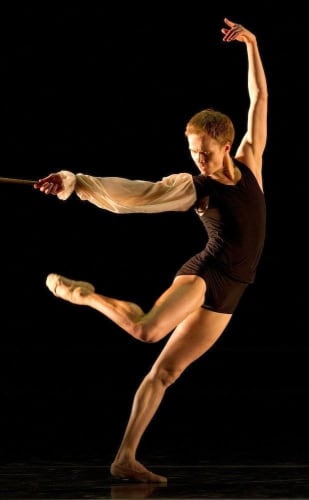If the Mikhailovsky Ballet’s previous three classical productions (Giselle, Don Quixote, and Laurencia) at the Coliseum were about the dance, Nacho Duato’s double bill, Multiplicity / Forms of Silence and Emptiness, celebrating Johann Sebastian Bach, is all about the music.
Commissioned in 1997 by the Deutsches Nationaltheater in Weimar to create a ballet relating to that city, “a single name resounded in [Duato’s] head: Bach”. Quite an undertaking—the two-act ballet opened in Weimar in April 1999 and at the Mikhailovsky Theatre in March 2012.
Of course, Duato is not the first to use Bach’s music for dance. Bach’s complex and dense contrapuntal textures and forms, his mathematical clarity and beauty, have often tempted choreographers to create dance in synaesthetic empathy.
Bookended by The Goldberg Variations Aria da capo, the music for Multiplicity, allegro and adagio is mostly from Bach’s concertos, cantatas, orchestral suites, minuets and polonaises, whilst for Forms of Silence and Emptiness it is taken from Bach’s organ and fugue compositions to evoke “images of doubt, sacrifice and grief”.
Duato professes no narrative, yet Bach’s personal life intrudes, his inspiration, the nature of genius and creation are made apparent throughout the dance pieces in allusions, metaphors, clichés, and an attempt at a representational transformation of notes into movement.
Opening chorus from Zerreißet, zersprenget, zertrümmert die Gruft (Destroy, burst, shatter the tomb), aria from Weichet nur, betrübte Schatten (Dissipate you troublesome shadows), both secular cantatas; choral prelude to Machs mit mir, Gott, nach deiner Güt (Deal with me, God, according to your kindness); and Seufzer, Tränen, Kummer, Not, (Sighs, tears, grief, distress) aria from Ich hatte viel bekümmernis (I have much affliction) shape the choreography and narrative.
Bach’s Muse becomes a young girl, her body his laboratory for the Prelude to his Cello Suite No 1 in G major. Marat Shemiunov in period costume (the tall Semiunov changes Don Quixote’s costume for Bach’s) plays on a tiny slip of a girl (the versatile Sabina Yapporova) in black vest and shorts, manipulating her this way and that.
Some sort of conflict is engineered between his Muse and a white-masked figure in full black-ruffed skirt. Is she Death or his wife? She seems to be both. Polina Semionova gives her dramatic form, stalking the cloned group, Bach’s creation and workshop.
Cyphers, hieroglyphs, signifiers, the dancers semaphore in inscrutable hand gestures and body language, in high lifts and floor shapes, in flexed feet and fencing matches with bow and baton, the ardour and mystery of creation.
Bare-chested muscular men in short crinolines like a pair of cygnets (a touch of Matthew Bourne tongue-in-cheek wit?) dance a frisky minuet. Swivel-hipped robotic women enslaved by music—are these organ stops or ecclesiastical statuary?
Piggybacks and leapfrog in velvet frock coats, frantic frolics to a multitude of notes. But the best for me are the group of men in black floor-length purple-lined sleeveless novice priest coats: dervishes, Shakers, speaking the wonder of God and Bach through their bodies.
Duato reaches to express in dance form music that is complex and divine, but then a man’s reach should exceed his grasp, and the young dancers give the two fifty-minute pieces their all in orchestral groupings, in pas de deux, de trois, and de six, in sound waves of dance and surges of energy.
First and second soloists, coryphées and coryphés, corps de ballet and principal Leonid Sarafanov, walk, run, stretch, make shapes, keep time, play with form and tempo, as Shemiunov’s Bach plays on their bodies, now harpsichord and clavichord, now the notes themselves arranged along the staves.
Jaffar Chalabi’s architectural set, Frank Gehry mixed with Richard Rogers, a tiered metal backscape structure, a walkway to heaven, a musical stave, lit tenebrously by Brad Fields, casts shadows in which Bach looms large, and dancers shift shape.
His back to us, Bach contemplates the double helix of life, a silvered black cloth twisting in the wind, before he goes to meet his Maker, but his gift lives on forever. Finally, Bach lies in state on a row of lectern-shaped seats. The masked woman’s work complete, she takes her leave, but the glory that is Bach remains, and rises ever upward.
Warm applause and compliments to musical director and conductor Mikhail Tatarnikov, soloists, orchestra, and soprano Svetlana Moskalenko.


